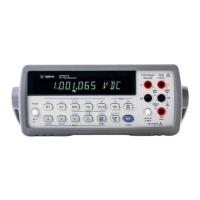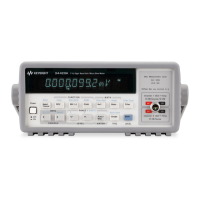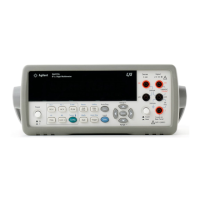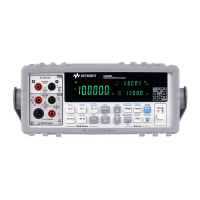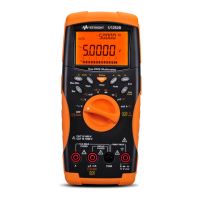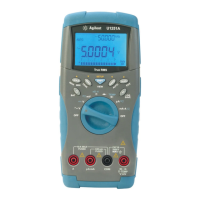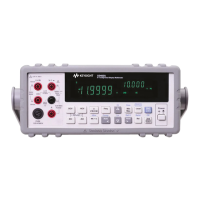SPOLL (Serial Poll)
306 Appendix B GPIB Commands
Examples REMOTE 7 !SETS GPIB REN LINE TRUE
The above line does not, by itself, place the multimeter in the remote state. The
multimeter will only go into the remote state when it receives its listen address
(e.g., sending OUTPUT 722;"BEEP").
REMOTE 722 !SETS REN LINE TRUE AND ADDRESSES DEVICE 22
The above line places the multimeter in the remote state.
SPOLL (Serial Poll)
The SPOLL command, like the STB? command (multimeter command set),
returns a number representing the set bits in the status register (status byte). The
returned number is the weighted sum of all set bits.
Syntax P=SPOLL (722)
Status Register Bits The bits and their corresponding weights are:
Remarks • If the SRQ line is set true when you send SPOLL, all bits in the status register
are cleared provided the condition that set. the bit(s) is no longer present. If the
SRQ line is false when you send SPOLL, the status register's contents are not
changed.
• The SPOLL command differs from the STB? command in that STB? interrupts
the multimeter's microprocessor. Thus, with STB? the multimeter always
appears to be busy (bit 4 clear). SPOLL simply extracts the status byte without
interrupting the microprocessor. Therefore, you can use SPOLL to monitor the
readiness of the multimeter for further instructions.
• If data is in the output buffer when you send the SPOLL command, that data
remains intact. If data is in the output buffer when you send the STB? command,
however, the data is replaced by the status data.
Examples 10 P=SPOLL (722) !SENDS SERIAL POLL, PLACES RESPONSE INTO P
20 DISP P !DISPLAYS RESPONSE
30 END
Bit
Number
Decimal
Weight Description
0 1 Subprogram execution completed
1 2 Hi or lo limit exceeded
2 4 SRQ command executed
3 8 Power - on SRQ occurred
4 16 Ready for Instructions
5 32 Error (consult error register)
6 64 Service requested
7 128 Data available
